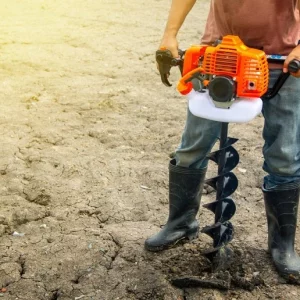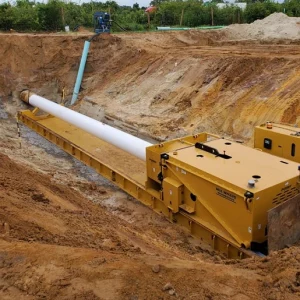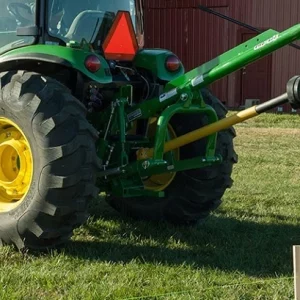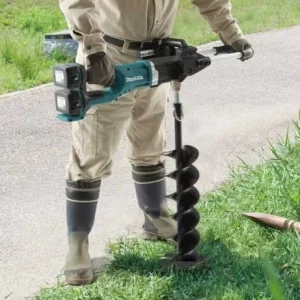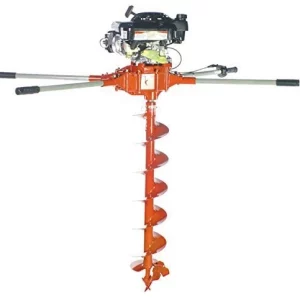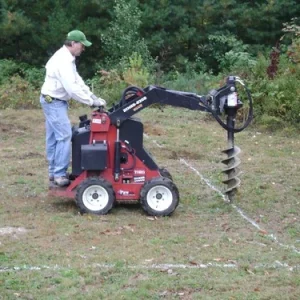Augers have been indispensable tools for various industries, from gardening to woodworking and beyond. Whether you’re a seasoned professional or just starting your journey in the world of augers, questions like Do augers need sharpening? When do they need to be sharpened? and how often should we sharpen it? Are common
In this blog, we’ll delve into the heart of the matter, uncovering the reasons behind the need (or lack thereof) for sharpening augers.
Let’s break down the mechanics, applications, and maintenance practices associated with these versatile tools, aiming to provide you with a comprehensive understanding of how to keep your augers performing at their best.
Let’s start by answering the primary question:
Yes, they do need sharpening! Much like the blades of a knife, augers can become dull over time. Their efficiency can drop, making your task more labor-intensive and less precise. And here’s why:Do Augers Need Sharpening?
Types of Augers and Their Sharpening Need
In the world of augers, understanding the specific sharpening needs for each type is key to their effective use and longevity. Whether you’re drilling into wood, ice fishing in freezing temperatures, or exploring the earth’s surface, a grasp of these requirements empowers you to make informed maintenance decisions, keeping your augers at their peak performance.
Here are some of the types and how to sharpen them:
| Auger Type | Application and Characteristics | Sharpening Needs |
| Wood Augers | Utilized in carpentry for drilling into wood surfaces. | The hardness of wood can quickly dull the cutting edges, affecting efficiency. Regular sharpening maintains precision. |
| Ice Augers | Essential for ice fishing in frigid environments. | Ice’s abrasive nature can rapidly wear down the cutting edges. Frequent sharpening ensures optimal performance and reduces effort. |
| Soil Augers | Used to penetrate soil and sometimes rocks. | Facing dirt and rocks, soil augers undergo significant wear. Regular sharpening prevents damage and prolongs their lifespan. |
How Often Should You Sharpen Your Auger?
It’s not just about knowing if you should sharpen your auger, but how often. Factors influencing this include:
- Usage Frequency and Intensity: The frequency and intensity of your auger usage play a significant role in determining how often you should sharpen it. If you use your auger frequently and for heavy-duty tasks, it will naturally experience more wear and tear on its cutting edges. High-intensity usage might require more frequent sharpening to maintain optimal performance. On the other hand, occasional use might allow you to go longer between sharpening sessions.
- Material Type: The type of material you’re working with greatly affects how quickly your auger dulls. Augers used on softer materials like wood or plastic tend to retain their sharpness longer compared to those used on harder materials like metal or concrete. Abrasive materials can quickly wear down the cutting edges, necessitating more frequent sharpening.
- Quality of the Auger: Higher-quality augers are often designed with better materials and more advanced manufacturing processes. These augers may have harder and more durable cutting edges that can withstand more wear before requiring sharpening. Investing in a high-quality auger might mean you can go longer between sharpening sessions compared to a lower-quality counterpart.
- Maintenance Practices: How you maintain your auger between uses can also influence its sharpness retention. Proper storage, cleaning, and handling can help extend the time between sharpening. If an auger is stored in a damp or abrasive environment, it might dull faster. Regular cleaning to remove debris and applying lubrication can also contribute to maintaining its cutting efficiency.
- Skill and Technique: The way you use the auger can impact how often it needs sharpening. Using the right technique, avoiding excessive force, and allowing the auger to do the work without undue stress can reduce wear on the cutting edges. Poor technique or forcing the auger through material can lead to faster dulling.
- Sharpening Tools and Techniques: The tools and techniques you use for sharpening also matter. Using appropriate sharpening tools, such as files, grinding wheels, or dedicated auger sharpeners, can affect how effectively you restore the cutting edges. Improper sharpening can lead to uneven edges or excessive material removal, shortening the overall lifespan of the auger.
Signs that your Auger needs sharpening
Difficulty in Boring Holes
If you notice that your auger is struggling or requiring more force than usual to bore holes, it’s a clear sign that the cutting edges might be dull. The auger should glide through material smoothly; any noticeable resistance indicates it’s time for sharpening.
Rough or Jagged Holes
When the auger’s cutting edges lose their sharpness, the holes they create can become rough, uneven, or jagged. Instead of clean and neat holes, you might observe torn or splintered edges around the hole, suggesting that the auger isn’t cutting as effectively as it should.
Visible Nicks or Damage on the Auger Blade
Regularly inspect your auger’s blade for visible signs of nicks, chips, or general wear. These imperfections can compromise the blade’s ability to cut smoothly. If you see any noticeable damage on the blade’s edges, it’s a strong indicator that the auger needs sharpening to restore its cutting efficiency.
Methods of Sharpening Augers
There’s more than one way to skin a cat, and similarly, more than one way to sharpen an auger:
- Using a File: Using a file involves manually refining the cutting edges with precision. While it can be time-consuming, this method is great for maintaining the original shape and angle of the edges, making it a solid choice for preserving the auger’s performance.
- Grinding: Grinding, powered by tools like grinders, is a quicker option that demands caution to avoid over-removing material. It’s handy for heavily worn augers, though overheating risks exist that can affect the metal’s hardness.
- Professional Services: Professional sharpening services are experts in assessing and restoring augers. Especially useful for complex or valuable augers, this option guarantees uniform and safe results, ensuring your tool is well taken care of.
- Dedicated Auger Sharpeners: Auger-specific sharpening tools simplify the process, offering efficiency and accuracy. These tools are designed to match your auger’s geometry, making sharpening easier and consistent for users.
- Honing and Polishing: Honing with fine-grit stones and polishing refine edges after sharpening, enhancing sharpness and smoothness. This step can significantly boost the auger’s cutting efficiency and overall performance.
The Risks of Not Sharpening
- Tool Damage: A dull auger can accelerate wear on other parts of the tool, leading to faster deterioration
- Wasted Energy: Using a dull tool requires more effort and energy, reducing your efficiency
- Increased Costs: Neglecting sharpening may lead to premature tool replacement, incurring unnecessary expenses
- Reduced Hole Quality: Dull augers create uneven and splintered holes, affecting the quality of your work
- Strain on Motor/Engine: A dull auger strains the power source, potentially shortening its lifespan and causing breakdowns
- Increased Work Time: Dull augers slow down tasks, prolonging project completion times
- Safety Concerns: Dull augers pose safety risks, including kickbacks and less controlled operation
- Material Waste: Inefficient cutting due to dullness results in excess material wastage
- Compromised Precision: Lack of sharpness undermines the precision needed in some applications
- Frustrating Experience: Using a dull tool can lead to frustration and dissatisfaction with your work.
Also, Read: Do Augers Work in Clay Soil?
FAQs on Do Augers Needs Sharpening?
A sharp auger requires less force to operate, reducing the chances of slippage or mishandling. Yes, with the right tools like a file or grinder, and some knowledge, you can. However, ensure you follow safety guidelines. Look for visible nicks, damage, or if it’s becoming harder to bore holes. It’s always best to start slow and take your time. If you’re unsure, consider seeking professional services. Regular inspections after each use will keep you aware of its condition and sharpening needs. Costs vary based on location and the type of auger. However, consider it an investment in your tool’s longevity.Why is a sharp auger safer?
Can I sharpen my auger at home?
How can I tell if my auger is dull?
What if I damage my auger during sharpening?
How often should I inspect my auger?
Is it expensive to get an auger professionally sharpened?
Conclusion
Answering the question, “Do Augers Need Sharpening?” – absolutely! Keeping your auger sharp ensures efficiency, safety, and the longevity of your tool. Remember, an ounce of prevention is worth a pound of cure. Ensure your auger is sharp, and you’ll reap the benefits for years to come.


